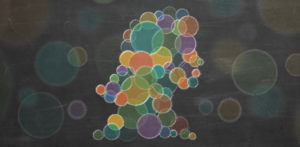Every day at the Promega Headquarters in Madison, Wisconsin, many Promega employees trade the crowded Beltline Highway for a scenic route along the bike trails. As our colleagues wind around the lakes and prairies of south-central Wisconsin, they’re reducing greenhouse gas emissions and getting some fun exercise in the process. This week, during National Bike-to-Work week, we’re taking time to recognize our colleagues who opt for a healthier and more sustainable commute. In the video below, hear about how Promega supports our bike commuters from Sam Jackson, an avid biker and Multimedia Specialist at Promega.
Author: Promega
Converting RPM to g Force (RCF) and Vice Versa
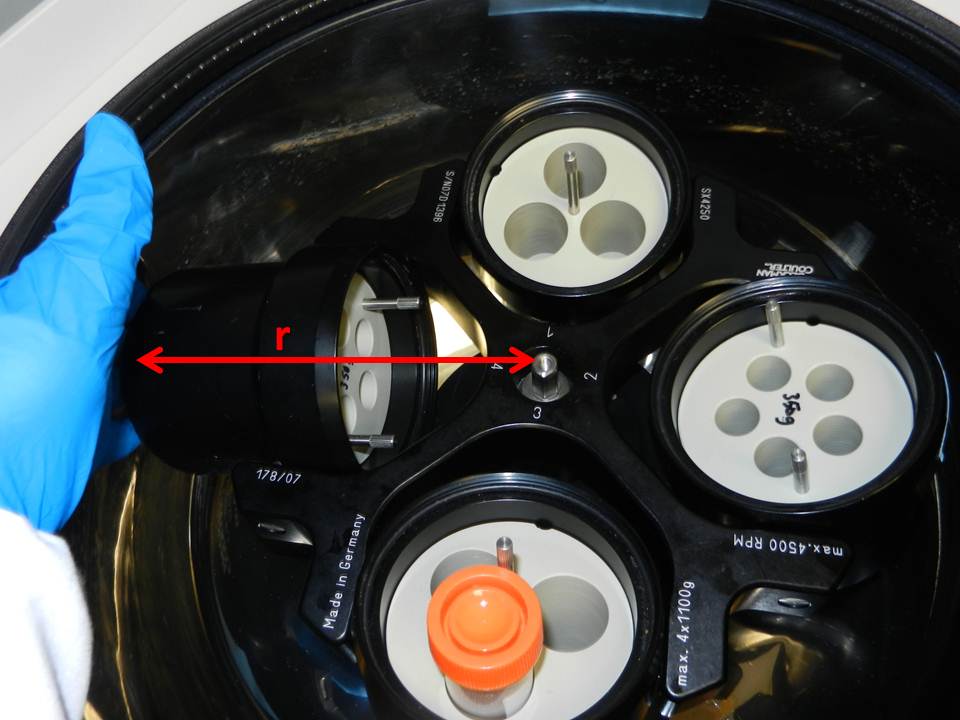
g Force or Relative Centrifugal Force (RCF) is the amount of acceleration to be applied to the sample. It depends on the revolutions per minute (RPM) and radius of the rotor, and is relative to the force of Earth’s gravity.
A good, precise protocol for centrifugation instructs you to use the g force rather than RPMs because the rotor size might differ, and g force will be different while the revolutions per minute stay the same. Unfortunately, many protocols are written in hurry and instructions are given in RPMs. Therefore, you have to convert g force (RCF) into revolutions per minute (rpms) and vice versa.
Modern centrifuges have an automatic converter but older ones do not. There is a simple formula to calculate this, but it takes some time to do the calculation. Meanwhile, your cells might die or the biochemical reaction goes on for three times longer than it should.
There are several ways to make conversion:
Continue reading “Converting RPM to g Force (RCF) and Vice Versa”From BTCI to Africa and Back Again: One Student’s Journey in Science Education
Today’s blog is brought to us by and alumus of Dane County Youth Apprenticeship Program, Aidan Holmes.
In this blog I have the opportunity to write about how my experiences at the BTC Institute as a high school student were instrumental in leading me to my passion for science education, my Peace Corps experience, and my current role as a biotechnology instructor for the very same institute.
I became familiar with the BTC Institute as a student at Marshall High School when our biology teacher organized a biotechnology field trip for us. I loved learning about DNA and biotechnology since 7th grade so attending a field trip like this was an incredible opportunity to engage in hands-on biotechnology. When I learned about the Youth Apprenticeship Program in Biotechnology I knew I had to apply and enrolled during my senior year of high school. Through the program I took a weekly class at the BTC Institute 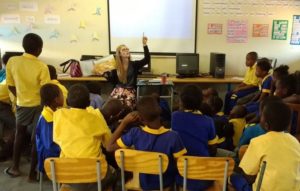 and I worked as a student researcher in a biochemistry lab at UW-Madison. I enrolled for classes at UW-Madison the following year and pursued an undergraduate degree in genetics and a certificate in education and educational services. Continue reading “From BTCI to Africa and Back Again: One Student’s Journey in Science Education”
and I worked as a student researcher in a biochemistry lab at UW-Madison. I enrolled for classes at UW-Madison the following year and pursued an undergraduate degree in genetics and a certificate in education and educational services. Continue reading “From BTCI to Africa and Back Again: One Student’s Journey in Science Education”
Executing a NanoBRET™ Experiment: From Start to Data
This is a guest post from Katarzyna Dubiel, marketing intern in Cellular Analysis and Proteomics.
“The objective of my experiment was to test the NanoBRET™ assay as if I was a customer, independent of the research and development team which develops the assay.”
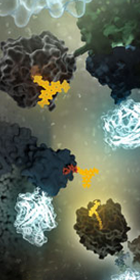 Designing and implementing a new assay can be a challenging process with many unexpected troubleshooting steps. We wanted to know what major snags a scientist new to the NanoBRET™ Assay would encounter. To determine this, we reached out to Laurence Delauriere, a senior applications scientist at Promega-France, who had never previously performed a NanoBRET™ assay. Laurence went step-by-step through the experimental process looking at the CRAF-BRAF interaction in multiple cell lines. In an interview, Laurence provided us with some tips and insights from her work implementing the new NanoBRET™ assay.
Designing and implementing a new assay can be a challenging process with many unexpected troubleshooting steps. We wanted to know what major snags a scientist new to the NanoBRET™ Assay would encounter. To determine this, we reached out to Laurence Delauriere, a senior applications scientist at Promega-France, who had never previously performed a NanoBRET™ assay. Laurence went step-by-step through the experimental process looking at the CRAF-BRAF interaction in multiple cell lines. In an interview, Laurence provided us with some tips and insights from her work implementing the new NanoBRET™ assay.
In a few words, can you explain NanoBRET?
“NanoBRET is used to monitor protein: protein interactions in live cells. It is a bioluminescence resonance energy transfer (BRET) based assay that uses NanoLuc® luciferase as the BRET energy donor and HaloTag® protein labeled with the HaloTag® NanoBRET™ 618 fluorescent ligand as the energy acceptor to measure the interaction of two binding partners.” Continue reading “Executing a NanoBRET™ Experiment: From Start to Data”
Oh, the Places You’ll Go, Thanks to Science!
Today’s guest blog is written by Aparna Shah, a Post-Doc at Johns Hopkins University. Aparna visited the Promega campus in Madison, Wisconsin on January 18, 2019 and offered to share her experiences.
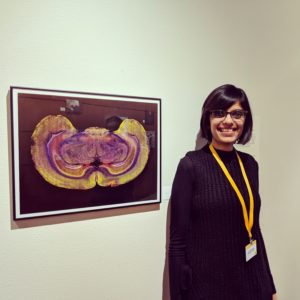
I don’t recall ever having won a contest before, let alone the grand prize! In fact, I did a double take when I first read the email informing me that my SciArt submission had been selected as a winning entry for the Promega Art Contest for Creative Scientists. What did I win, you ask? A free trip to Madison, WI to meet with the team behind the contest and explore Promega’s headquarters!
I first heard about the contest on the HelloPhD podcast and considered participating primarily to support the SciArt movement. A couple of days later, I came across a perfectly-timed tweet about the contest that nudged me out of procrastination mode and reminded me to follow through with it. I’m going to take a second here to pitch both HelloPhD and Twitter to you. Regardless of whether you’re an undergraduate student interning in a science lab or a senior postdoc, the HelloPhD podcast is incredible at calming you down while you’re on the roller coaster ride called academia. As for Twitter, I can think of several pros for using it. But in the context of this post, it is one of the best resources for discovering opportunities that match your interests.
Continue reading “Oh, the Places You’ll Go, Thanks to Science!”
Deep in the Jungle Something Is Happening: DNA Sequencing
This blog was written by guest blogger and 2018 Promega Social Media Intern Logan Godfrey.
Only 30 years ago, the polymerase chain reaction (PCR) was used for the first time, allowing the exponential amplification of a specific DNA segment. A small amount of DNA could now be replicated until there was enough of it to study accurately, even allowing sequencing of the amplified DNA. This was a massive breakthrough that produced immediate effects in the fields of forensics and life science research. Since these technologies were first introduced however, the molecular biology research laboratory has been the sole domain of PCR and DNA sequencing.
While an amazing revolution, application of a technology such as DNA sequencing is limited by the size and cost of DNA sequencers, which in turn restricts accessibility. However, recent breakthroughs are allowing DNA sequencing to take place in jungles, the arctic, and even space—giving science the opportunity to reach further, faster than ever before.

Gideon Erkenswick begins extractions on fecal samples collected from wild tamarins in 2017. Location: The GreenLab, Inkaterra. Photo credit: Field Projects International.
The newfound accessibility of DNA sequencing means a marriage between fields of science that were previously largely unacquainted. The disciplines of genomics and wildlife biology/ecology have largely progressed independently. Wildlife biology is practiced in the field through observations and macro-level assessments, and genomics, largely, has developed in a lab setting. Leading the charge in the convergence of wildlife biology and genomics is Field Projects International.
Continue reading “Deep in the Jungle Something Is Happening: DNA Sequencing”MSI Analysis and the Application of Therapies Based on 2018 Nobel Immuno-Oncology Work
The 2018 Nobel Prize in Physiology and Medicine was awarded to James P. Allison of the United States and Tasuku Honjo of Japan for their work to identify pathways in the immune system that can be used to attack cancer cells (1). Although immunotherapy for cancer has been a goal for many decades, Dr. Allison and Dr. Honjo succeeded through their manipulation of “checkpoint inhibitor” pathways to target cancer cells.
Immune checkpoint inhibitor drugs have been effective in cancers such as aggressive metastatic melanoma, some lung cancers, kidney, bladder and head and neck cancers. These therapies have succeeded in pushing many aggressive cancers below detectable limits, though these cases are notably not relapse-free or necessarily “cured” (2,3).
One challenge in implementing immunotherapy in a cancer treatment regime is the need to understand the genetic makeup of the tumor. Certain tumors, with specific genetic features, are far more likely to respond to immune checkpoint therapy than others. For this reason, Microsatellite Instability (MSI) analysis has become an increasingly relevant tool in genetic and immuno-oncology research.
What is MSI Analysis?
Continue reading “MSI Analysis and the Application of Therapies Based on 2018 Nobel Immuno-Oncology Work”Is MPS right for your forensics lab?
Today’s post was written by guest blogger Anupama Gopalakrishnan, Global Product Manager for the Genetic Identity group at Promega.
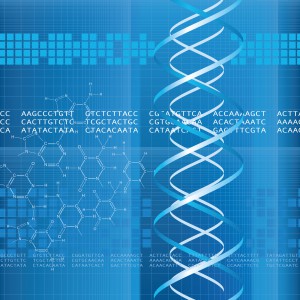
Next-generation sequencing (NGS), or massively parallel sequencing (MPS), is a powerful tool for genomic research. This high-throughput technology is fast and accessible—you can acquire a robust data set from a single run. While NGS systems are widely used in evolutionary biology and genetics, there is a window of opportunity for adoption of this technology in the forensic sciences.
Currently, the gold standard is capillary electrophoresis (CE)-based technologies to analyze short tandem repeats (STR). These systems continue to evolve with increasing sensitivity, robustness and inhibitor tolerance by the introduction of probabilistic genotyping in data analysis—all with a combined goal of extracting maximum identity information from low quantity challenging samples. However, obtaining profiles from these samples and the interpretation of mixture samples continue to pose challenges.
MPS systems enable simultaneous analysis of forensically relevant genetic markers to improve efficiency, capacity and resolution—with the ability to generate results on nearly 10-fold more genetic loci than the current technology. What samples would truly benefit from MPS? Mixture samples, undoubtedly. The benefit of MPS is also exemplified in cases where the samples are highly degraded or the only samples available are teeth, bones and hairs without a follicle. By adding a sequencing component to the allele length component of CE technology, MPS resolves the current greatest challenges in forensic DNA analysis—namely identifying allele sharing between contributors and PCR artifacts, such as stutter. Additionally, single nucleotide polymorphisms in flanking sequence of the repeat sequence can identify additional alleles contributing to discrimination power. For example, sequencing of Y chromosome loci can help distinguish between mixed male samples from the same paternal lineage and therefore, provide valuable information in decoding mixtures that contain more than one male contributor. Also, since MPS technology is not limited by real-estate, all primers in a MPS system can target small loci maximizing the probability of obtaining a usable profile from degraded DNA typical of challenging samples.
Continue reading “Is MPS right for your forensics lab?”Why I Made the Switch: The Journey of Finding More than Just a Job
Today’s blog is contributed by guest blogger Caitlin Cavanaugh, Client Support Consultant with Promega North America.
 Recently, I began a new role as a client support consultant at Promega. In this role, I’m responsible for all technical and sales support for the Promega portfolio in the New Jersey and Philidelphia area.
Recently, I began a new role as a client support consultant at Promega. In this role, I’m responsible for all technical and sales support for the Promega portfolio in the New Jersey and Philidelphia area.
Before coming to Promega, I worked in a lab at a start-up company right out of college, then made my way into sales, where I worked for a leading life-science instrumentation company for thirteen years.
Working in the life science industry for years, I knew that Promega was always looking a step ahead to promote better science and was eager to be a part of that. Here’s why I decided to make the switch to Promega: Continue reading “Why I Made the Switch: The Journey of Finding More than Just a Job”
From Drug Screening to Agriculture to Cardiac Development, A Dual-Luciferase Reporter Brings You the Story
Today’s blog was written by guest blogger Katarzyna Dubiel, marketing intern in Cellular Analysis and Proteomics. Last updated 02/12/2021
Reporter gene assays have been critical for the study of a wide-range of biological questions, from regulation of gene expression to cellular signaling. While reporter gene assays constitute a large group of technologies, here we highlight the diversity of new discoveries enabled by highly quantitative and easily measured bioluminescent luciferase-based reporter assays. Below are our top picks of exciting research discoveries involving the Dual-Luciferase Reporter Assay format using firefly and Renilla luciferases.
Continue reading “From Drug Screening to Agriculture to Cardiac Development, A Dual-Luciferase Reporter Brings You the Story”